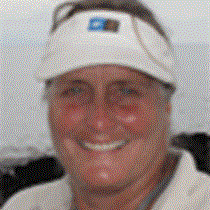Southern Isabela
The western realm of Galápagos is my favorite area in the archipelago, and today’s visits were outstanding. After breakfast we had long and short hike options along the uplifted coast of Urbina Bay at the base of Alcedo volcano. We all made a wet landing on a steep black sand beach where dozens of sea turtles have dug nests and left their eggs. We Naturalists asked our guests not to walk along the crest and upper beach so as not to pack down the sand around the turtle eggs and suffocate the embryos. We counted 6 fresh tracks on the Urbina beach; 3 female turtles had come ashore last night.
On the long hike our highlight was over 30 juvenile hawks. They hovered above us as we walked, perched on the mangroves and rocks nearby, and everyone got fabulous pictures of these beautiful birds of prey from all angles and distances. After having followed each of the three groups of long hikers, the hawks flew out to the beach where they entertained those who had done the short hike. Everyone also enjoyed finding several large yellow, utterly fearless land iguanas.
Back at the beach we swam, the kids surfed and dug in the sand, and those of us who had brought our books had some quality relaxing beach time. Some guests chatted and others stalked the curious hawks that landed on rocks, the park’s stop signs, shrubs and the beach. We boarded the Zodiacs when we were ready to return to the ship and once all of us were on the NG Islander, Captain Carlos had our boatswain, Nery, pull up the anchor and we headed further south to the afternoon’s visitor site.
Naturalist Ernie gave an entertaining and enlightening talk about Charles Darwin after we’d woken from a short siesta. Immediately afterwards half of our guests disembarked on the barren shore and Gilda and Daniel led two groups of hikers across the huge fields of broken lava that stretch for miles between Sierra Negra and Cerro Azul volcanoes. They were surprised when they came upon several brackish lagoons filled with lush greenery and two bright pink flamingos.
From the pangas, moving slowly in a mangrove lagoon, we spotted several species of rays: small diamond sting rays, a huge marbled sting ray, eight eagle rays and a squadron of at least 20 golden rays. We found nesting cormorants along the shore and feeding penguins that look like ducks when they sit on the water. As we returned to the ship, the sun slipped out from behind a low bank of clouds and dropped behind the curve of the horizon with a slight green flare.
The western realm of Galápagos is my favorite area in the archipelago, and today’s visits were outstanding. After breakfast we had long and short hike options along the uplifted coast of Urbina Bay at the base of Alcedo volcano. We all made a wet landing on a steep black sand beach where dozens of sea turtles have dug nests and left their eggs. We Naturalists asked our guests not to walk along the crest and upper beach so as not to pack down the sand around the turtle eggs and suffocate the embryos. We counted 6 fresh tracks on the Urbina beach; 3 female turtles had come ashore last night.
On the long hike our highlight was over 30 juvenile hawks. They hovered above us as we walked, perched on the mangroves and rocks nearby, and everyone got fabulous pictures of these beautiful birds of prey from all angles and distances. After having followed each of the three groups of long hikers, the hawks flew out to the beach where they entertained those who had done the short hike. Everyone also enjoyed finding several large yellow, utterly fearless land iguanas.
Back at the beach we swam, the kids surfed and dug in the sand, and those of us who had brought our books had some quality relaxing beach time. Some guests chatted and others stalked the curious hawks that landed on rocks, the park’s stop signs, shrubs and the beach. We boarded the Zodiacs when we were ready to return to the ship and once all of us were on the NG Islander, Captain Carlos had our boatswain, Nery, pull up the anchor and we headed further south to the afternoon’s visitor site.
Naturalist Ernie gave an entertaining and enlightening talk about Charles Darwin after we’d woken from a short siesta. Immediately afterwards half of our guests disembarked on the barren shore and Gilda and Daniel led two groups of hikers across the huge fields of broken lava that stretch for miles between Sierra Negra and Cerro Azul volcanoes. They were surprised when they came upon several brackish lagoons filled with lush greenery and two bright pink flamingos.
From the pangas, moving slowly in a mangrove lagoon, we spotted several species of rays: small diamond sting rays, a huge marbled sting ray, eight eagle rays and a squadron of at least 20 golden rays. We found nesting cormorants along the shore and feeding penguins that look like ducks when they sit on the water. As we returned to the ship, the sun slipped out from behind a low bank of clouds and dropped behind the curve of the horizon with a slight green flare.




